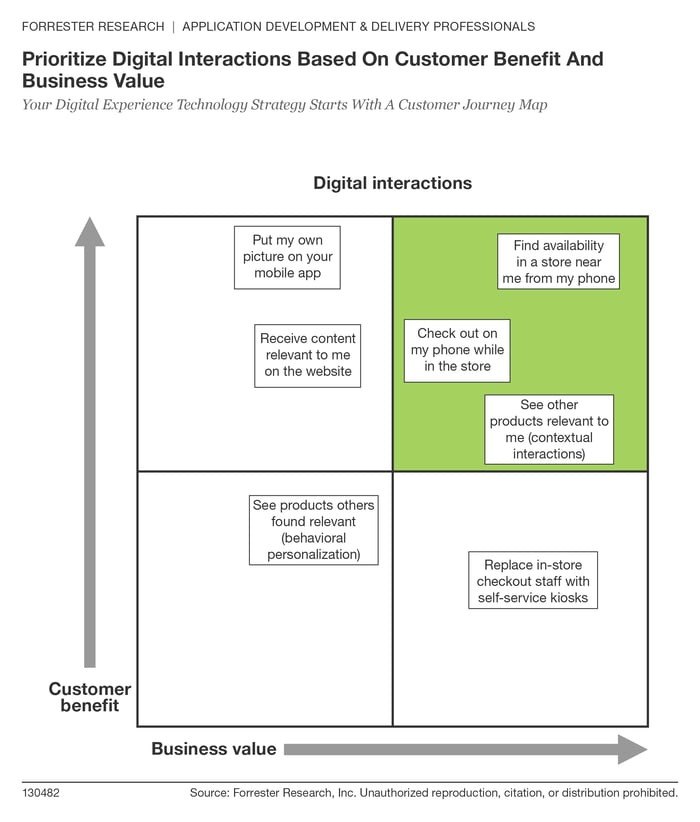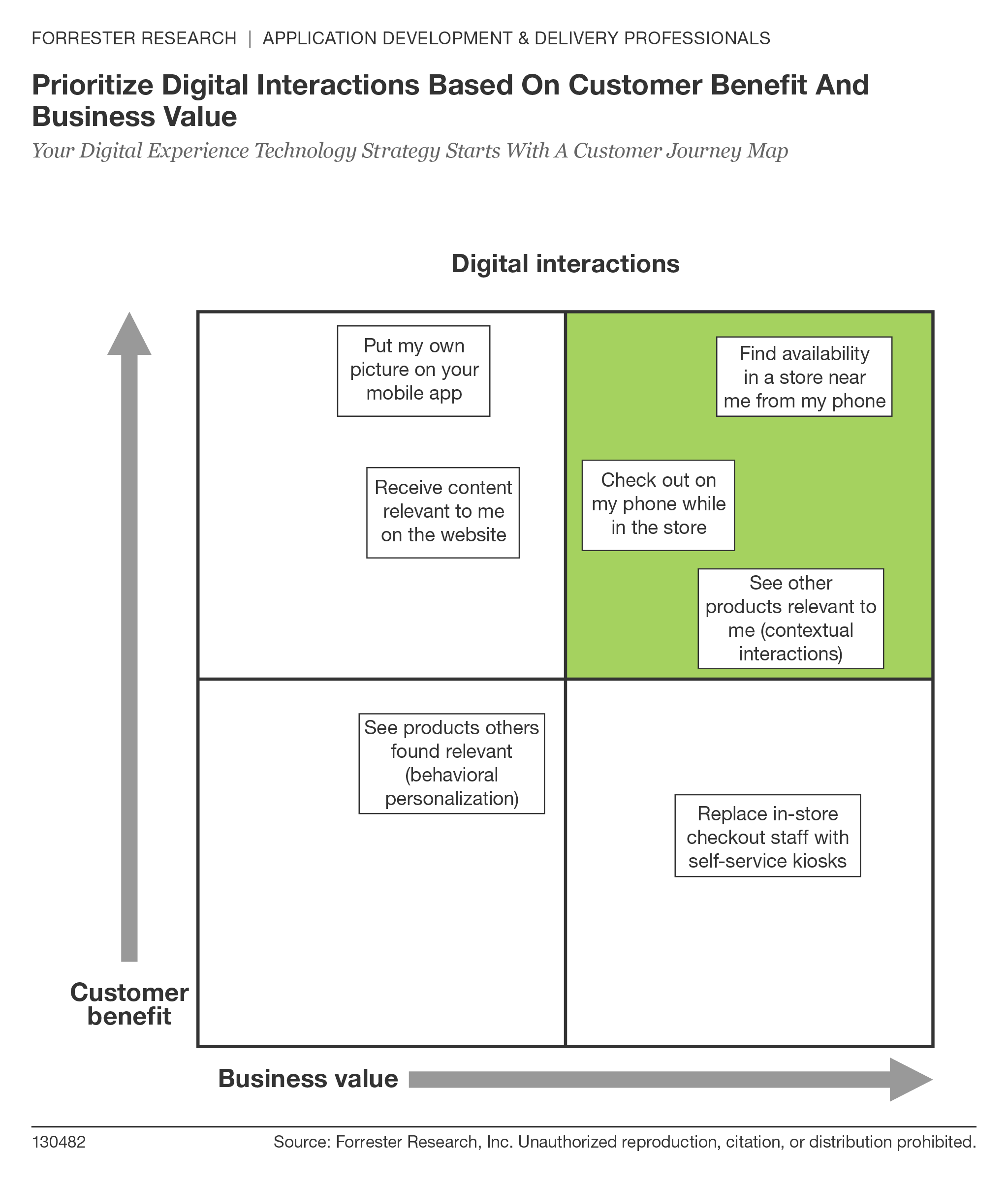Secrets to Customer Experience Success, Part 2: Prioritizing Tactics
This is the second in a four-part series exploring in more detail the ideas presented in Four Surprising Pitfalls in the Way of Great Customer Experience. See Part 1: Process v. Project here.
Now we’ll focus on the second pitfall: not having a viable, defensible way of prioritizing CX tactics.
Don’t Buy Software Without a Plan
With something as complex and costly as customer experience management (CXM), the tendency is to let each department choose its software solutions based on that department’s needs, preferences and budget, and then leave it to IT to figure out how to make it all work together (or not, as the case may be). The result in many cases has been an unbalanced and siloed approach to CXM, skewing heavily in favor of marketing functions above commerce or service. This is a bad approach.
Since marketing departments often get the lion’s share of responsibility and budget for CXM, customer experience (CX) architectures often end up with a fairly comprehensive suite of digital experience applications focused on attracting new customers, but have a relatively weak CX support system for commerce and/or service. You’ll need to adopt additional technologies to address those weaknesses, but you shouldn’t do it willy-nilly. That’s also a bad approach.
If you start purchasing software without strategy and justification, you’ll waste money. Probably lots of it. And the situation may actually get worse if the solutions you purchase don’t integrate well – or at all – with your existing or planned CX architecture. If a CX solution can’t share content, customer data and assets with other parts of your CXM platform, it may ultimately create more problems than it is likely to solve, no matter how cool its features are.
How to Prioritize CX Tactics
The key to prioritizing tech purchases is to consider both short-term wins AND each application’s place in your long-term platform-building strategy. To do that, you have to weigh customer goals against business objectives, looking for the win/win scenarios. Forrester analyst Ted Schadler illustrates this strategy with a quadrant diagram. The best CX tech investments for your organization will fall in the upper-right quadrant, where both customer benefits and business values are highest.

Prioritize What Benefits Both Customers and Business
If an application increases business value with each customer interaction, and the application also benefits the customer in tangible ways, then that purchase should take priority over applications that only benefit one party or the other.
Similarly, if an application or platform can only be justified for one department in the organization, it’s not a good CX investment. CX is everyone’s job, and every department needs to be able to access shared customer data, assets and content to provide a seamless and consistent experience throughout the customer journey.
That’s why filling in something like Shadler’s digital interactions diagram is useful in prioritizing your CX technology purchases.
Listen to the Voice of the Customer
Every company’s diagram will be different. The balance of customer and business values will vary from industry to industry and from brand to brand, depending on many complex factors. It’s pretty easy to determine and rank your business priorities – you can quantify those based on revenues, expenses, etc. – but then you have to figure out the customer’s priorities and rank those as well.
So how do you know what customers really want? Well, it’s pretty simple actually (and yet surprisingly challenging): you have to ask them. There are lots of ways to do it, from formal surveys to feedback requests at the end of each call to social media sentiment gauges, web site behavioral analytics, and more. Customer interaction analysis is a whole discipline unto itself, and too complex to properly address here. The point is that you need to gather and analyze customer data to understand your customers’ journeys, behaviors, expectations and needs. That data – NOT assumptions – is what should inform your understanding of customer benefits so that you can prioritize your CXM technology purchases and integration efforts today and into the future.
Looking forward to Secrets to CX Success, parts 3 and 4? Subscribe to our blog to get notifications when new posts come out.







